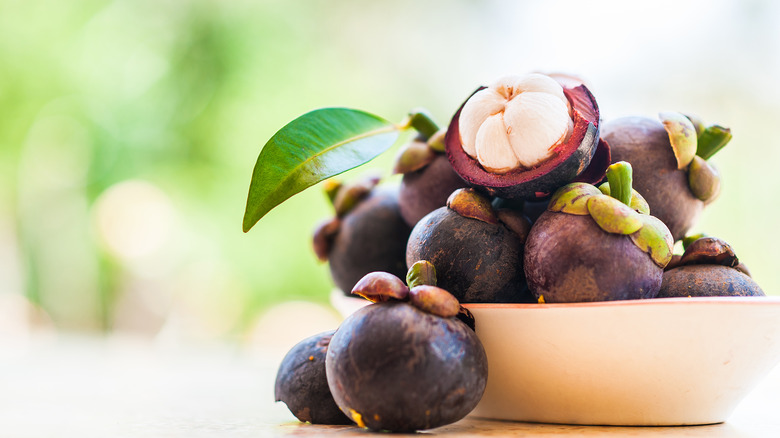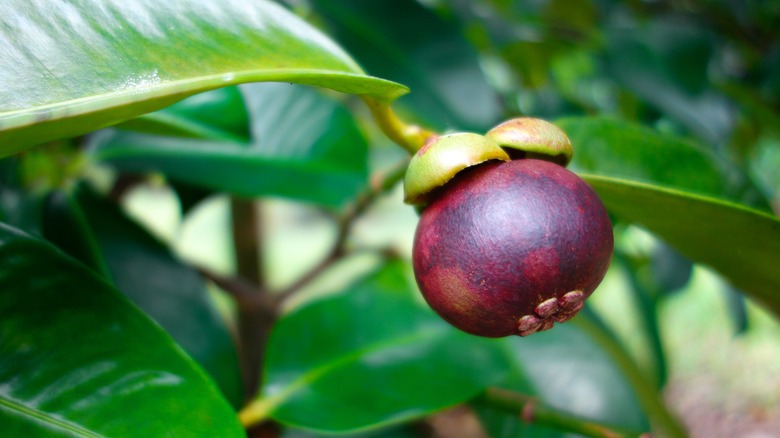The Real Reason Mangosteen Is So Expensive
Considered "the most exquisite fruit of the tropics" by explorers, farmers, and royalty — legend has it that Queen Victoria once offered a knighthood to anyone who could successfully bring her this exotic fruit — the mangosteen is known as "the queen of fruits" (via National Geographic). Native to Southeast Asia, the fruit has a dark purple rind when ripe, with an inner flesh of juicy and white wedge-like segments. The flavor is both sweet and sour, and said by some to be a mix of lychee, peach, pineapple, and strawberry. Best enjoyed raw as is at the peak of ripeness, mangosteens also work well in desserts and dishes with "tropical fish, meat, rice, or poultry," notes KTCHNrebel.
In additional to their delightful taste, mangosteens are highly nutritious. According to Healthline, mangosteens are low in calories, yet high in fiber and important vitamins and minerals, in addition to powerful antioxidants that may have "anti-inflammatory, anticancer, anti-aging, and antidiabetic effects." In short, mangosteens sound like a wonder fruit. The only downside? They're incredibly expensive — expect to pay $8 to $12 per pound at a market, assuming you can even find them, and three to five times that online, per Martha Stewart.
Mangosteens are difficult to grow
The reason mangosteens are so expensive is that they are incredibly difficult to grow. For one, they only flourish in a very small band of within 20 degrees of the Equator, notes Martha Stewart. Temperatures need to be between 40 degrees and 100 degrees Fahrenheit, warns Gardening Know How, which also notes how finicky mangosteens are about elevation, humidity, and rainfall. Magosteen trees also take a long time to mature, and will only flower (and bear fruit) after six to eight years, and tend to bear a good crop every other or third year, adds Martha Stewart. For harvests of up to 5,000 mangosteens per tree, expect to wait until years 10 to 20, warns KITCHNrebel.
In addition, due to concerns about the Asian fruit fly, mangosteens imported into the United States must undergo irradiation (via National Geographic), which also adds to the overall costs of an already pricey fruit. You can find canned and dried versions at a lower cost, but as is often the case, fresh mangosteens are just so much better. Mangosteens are expensive, but then, that shouldn't be too much of a surprise when it comes to "the queen of fruits."

